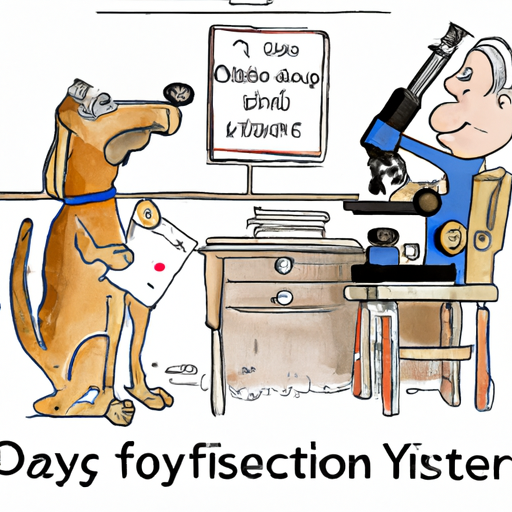As a dedicated caregiver, you are always on the lookout for your furry friend’s health and well-being. One issue that may raise concern is yeast infections in dogs. So, how do dogs get yeast infections? Let’s delve into the matter.
Understanding Yeast Infections in Dogs
Yeast is a type of fungus that lives on the skin of dogs. Usually, it’s harmless. However, when it grows out of control, it leads to an infection.
A yeast infection can affect different parts of your dog’s body, but it most commonly affects their ears. It may lead to a variety of symptoms such as itchiness, redness, discomfort, and changes in behavior.
Causes of Yeast Infections in Dogs
There are several reasons your dog might develop a yeast infection:
- Allergies: Dogs with allergies are more prone to yeast infections. This is because an allergic reaction can disrupt the balance of microorganisms on your dog’s skin, allowing yeast to multiply.
- Weakened Immune System: Dogs with weakened immune systems are less equipped to keep yeast under control.
- Hormonal Imbalance: Certain hormonal disorders can lead to an overgrowth of yeast.
- Warm, Humid Conditions: Yeast thrives in warm, humid environments. If your dog spends a lot of time in such conditions, they may be more susceptible to yeast infections.
Recognizing the Symptoms
Look out for these symptoms in your furry friend:
- Scratching the affected area
- Discoloration and redness of the skin
- Unusual odor
- Changes in behavior
If you notice any of these symptoms, it’s time to visit your vet.
Treatment Options
Most yeast infections in dogs are treated with antifungal medications. Your vet may prescribe topical creams, oral medication, or medicated baths.
| Treatment Type | Possible Medications |
|---|---|
| Topical Creams | Miconazole, Ketoconazole |
| Oral Medication | Fluconazole, Itraconazole |
| Medicated Baths | Chlorhexidine, Ketoconazole |
It’s important to follow your vet’s instructions closely. If left untreated, yeast infections can lead to more serious health problems.
Prevention is Better than Cure
Preventing a yeast infection is always better than treating one. Here’s how you can help prevent yeast infections in your dog:
- Keep your dog’s skin clean and dry.
- Regularly check your dog’s ears to make sure they’re clean and dry.
- Feed your dog a balanced diet to keep their immune system strong.
- Regularly groom your dog, especially if they have long hair.
FAQ
Q: Can a yeast infection in dogs be passed on to humans?
A: No, yeast infections in dogs cannot be passed on to humans.
Q: How long does it take for a yeast infection in dogs to clear up?
A: With treatment, most yeast infections in dogs clear up within a few weeks.
Q: Can a yeast infection in dogs be prevented?
A: Yes, by maintaining proper hygiene and a balanced diet, you can help prevent yeast infections in your dog.
Q: Can over-the-counter medication be used to treat yeast infections in dogs?
A: Always consult your vet before using any medication on your dog. They will advise on the most effective treatment options.
Remember, as a caregiver, you play a crucial role in your dog’s health. By understanding how yeast infections occur and taking preventative measures, you can help keep your furry friend happy and healthy.



